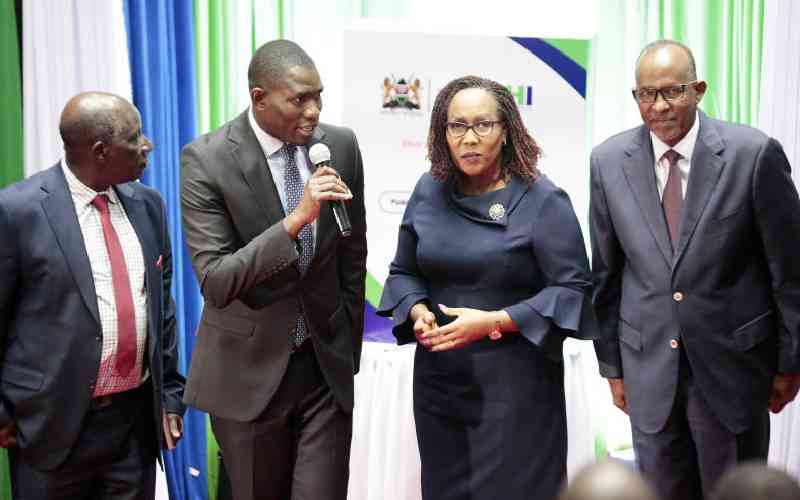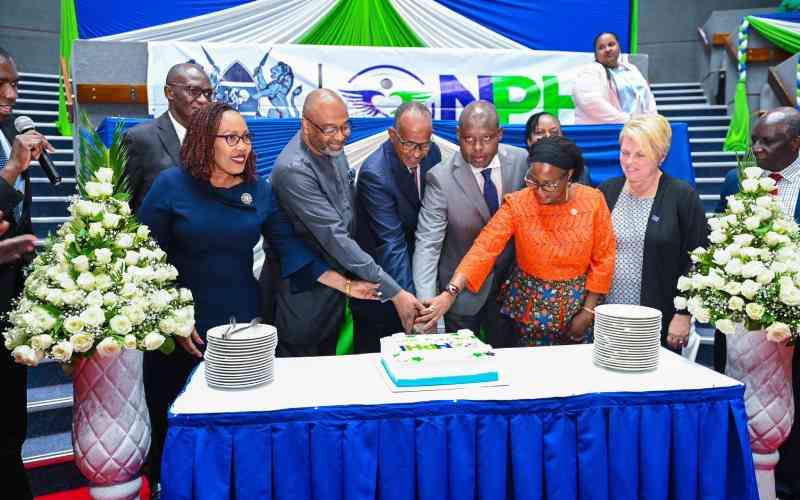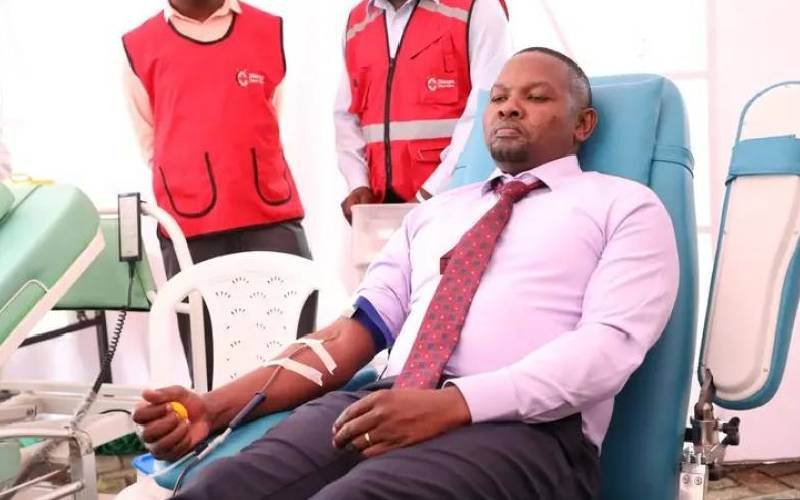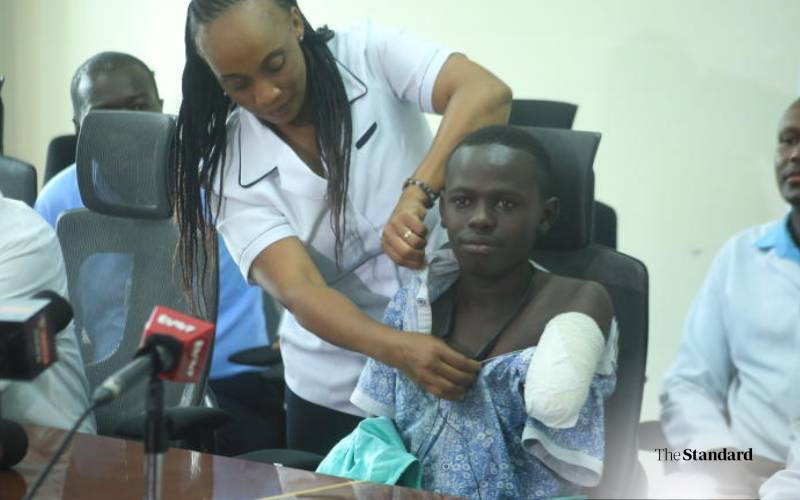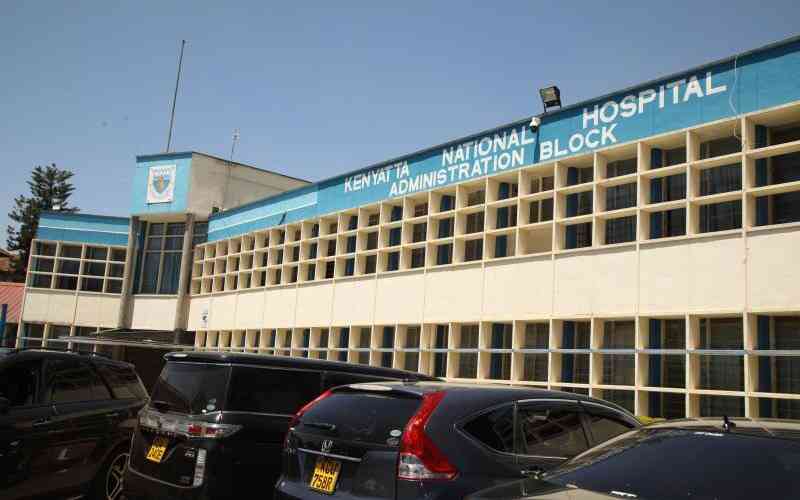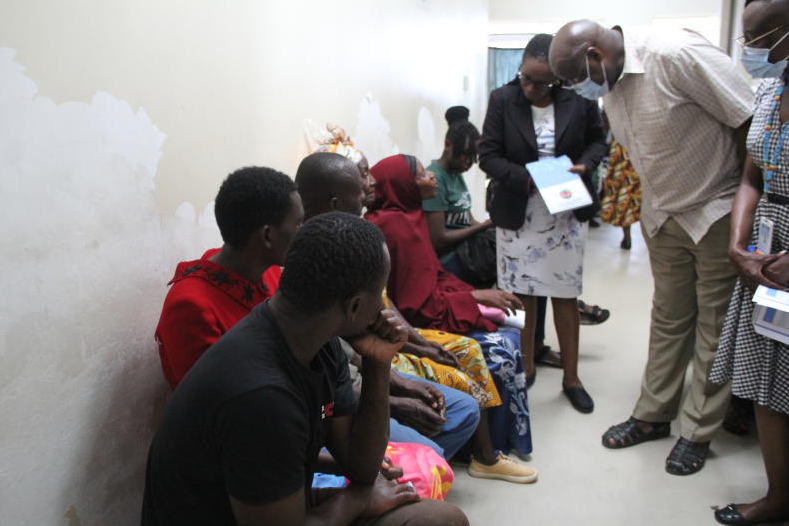
Makueni has not recorded any maternal death across all the public health facilities since 2022, it has emerged.
Dr Stephen Mwatha, Makueni County’s Director of Preventive and Promotive Services made the announcement as the county stepped up interventions to manage Postpartum Hemorrhage (PPH).
He said the breakthrough in reducing deaths from child-birth related bleeding involves strategies such as use of carbetocin drugs that greatly prevents PPH after mothers give birth.
This, he said, helps in quick contraction of uterus, and calibrated delivery drapes, a clear curtain-looking paper placed on the bed where mothers give birth, to accurately measure the loss of blood.
Drape is a direct blood measurement technique which uses a BRASS-V clear curtain-looking pouch placed on the bed where mothers give birth for blood collection.
If blood loss passes 250ml mark it signifies a need for control while between 500ml-1000ml is classified as a danger zone hence postpartum hemorrhage.
“A year after the Ministry of Health and the World Health Organization recommended using the calibrated drapes to accurately measure blood loss after childbirth, the County has purchased 11,000 of these drapes. No other county in Kenya is known to have purchased drapes in such large quantities,” said Dr Mwatha.
- Guidelines launched to reduce maternal deaths
- When pregnancy turns deadly: Understanding ectopic pregnancy and its risks
- How AI is revolutionising maternal health in remote villages
- Medics receive training to curb maternal mortality in rural areas
Keep Reading
Early detection
Initially, Makueni had rolled out the programme to 36 health facilities before the purchase of more drapes and distribution to all 242 health facilities that offer childbirth services.
The consignment will serve the facilities up to June 2025.
“The plan is to ensure that excessive bleeding is detected early, managed to prevent complications that arise from losing blood, like transfusion and even the death of the mother,” Dr Mwatha.
However, while the county celebrates these gains, maternal deaths from other causes such as premature births mostly related to teenage pregnancies, pre-eclampsia and eclampsia, remains high, with 426 deaths per 100,000 live births.
The county is counting on ramping up other measures to tackle challenges as they did to PPH, a leading cause of maternal deaths globally.
PPH is responsible for two in five maternal deaths in Kenya, according to the Ministry of Health’s First Confidential Report on Maternal Deaths in Kenya.
Kenya followed the 2023 World Health Organization (WHO) recommendation from the E-Motive trial that involved over 200,000 women in four countries; Kenya, Nigeria, South Africa, and Tanzania.
Michael Mwiti, a midwifery and maternal health specialist at the Johns Hopkins Affiliate, Jhpiego, said that PPH kills women because it is detected late and or even misdiagnosed altogether.
“Most healthcare providers check visually to assess bleeding, and that often tends to underestimate how much blood the mother has lost, and then treatment is delayed, leading to life-threatening consequences that could lead to the mother losing her uterus or dying,” he said.
Treatment bundled
The WHO-backed study conducted in 80 public hospitals in the four countries also showed that after the diagnosis, the healthcare provider offers all the treatments available within 15 minutes, and not one after another as has been the practice.
When the treatment is bundled as opposed to offering them one after another, it reduces severe bleeding, surgery due to severe bleeding and death by 60 per cent.
Makueni is among the first counties to wholly change tact in Kenya to manage the deadly complication by using calibrated drapes and then giving all the treatments as a bundle of massaging the uterus, giving uterotonics (medicines to contract the womb and stop the bleeding), giving the mother intravenous fluid and healthcare providers examining the mother to see whether there is need for referral.
While the drapes are not as costly, changing the operations of a health system is far from affordable. It involves training healthcare workers in more than the 100 health facilities in Makueni that offer childbirth.
Cash strapped, the county worked with partners like UNITAID, which worked with the county through the project called Accelerating Measurable Progress and Leveraging Investments for Postpartum Haemorrhage Impact—AMPLIPPHI, pronounced Amplify.
Michael Mwiti, the project lead for the AMPLI-PPHI said that the project trained 570 healthcare workers on all the aspects of the bundling method and tested how it works if integrated into the county’s health system.
Mwiti said: “AMPLIPPHI also gave Makueni quality-assured medicines that can last the county three years, supplied 36 training models for the healthcare workers and talked with the community through opinion leaders like business people county officials and community health promoters to ensure that everyone knows the danger signs of pregnancy and when to seek healthcare, including the importance of giving birth in hospital.”
 The Standard Group Plc is a multi-media organization with investments in media platforms spanning newspaper print
operations, television, radio broadcasting, digital and online services. The Standard Group is recognized as a
leading multi-media house in Kenya with a key influence in matters of national and international interest.
The Standard Group Plc is a multi-media organization with investments in media platforms spanning newspaper print
operations, television, radio broadcasting, digital and online services. The Standard Group is recognized as a
leading multi-media house in Kenya with a key influence in matters of national and international interest.

